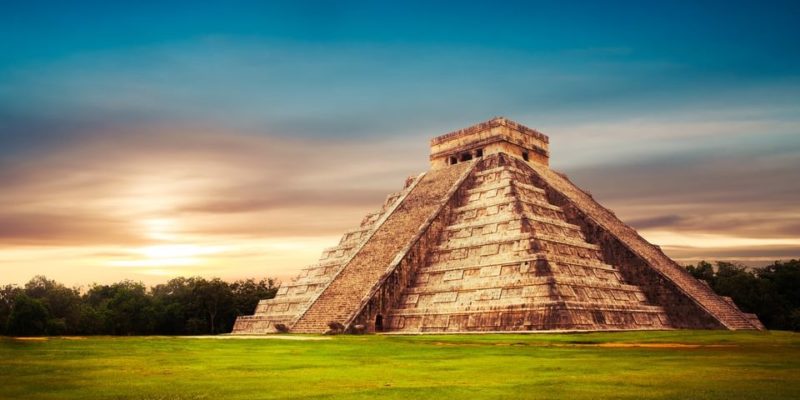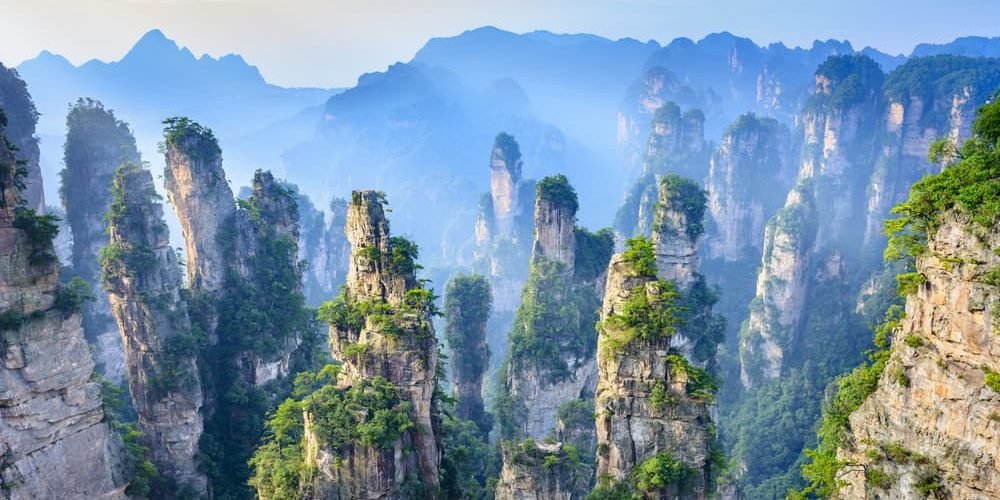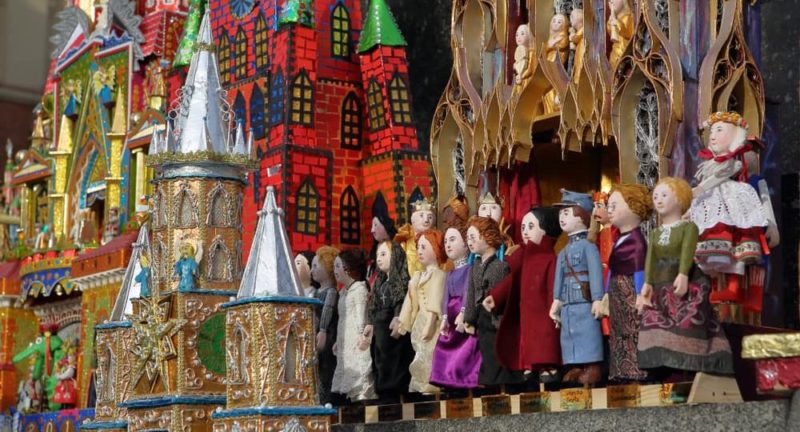We explain what cultural heritage is in its material and intangible form. Also, examples in Mexico and the rest of the world.

What is cultural heritage?
Cultural heritage is the set of material and immaterial goods that are strongly linked to social and cultural identity of a community, received from past generations.
It includes everything from places, monuments and artistic works to dances, songs and clothing. In addition to its intrinsic value, cultural heritage has become a tourist attraction and, in this sense, constitutes a source of economic resources for many communities.
In each country, There are laws that regulate the conservation of cultural heritage. Likewise, there are international agreements that establish the scope of conservation at a regional and global level.
Among the organizations dedicated to the maintenance and protection of cultural heritage, the most important is the United Nations Educational, Scientific and Cultural Organization (United Nations Educational, Scientific and Cultural Organizationin English), known as UNESCO.
In 1972, UNESCO approved the Convention on the Protection of the World Cultural and Natural Heritage, in which it established an international policy regarding the conservation and promotion of places considered emblematic or distinguished of a specific community or region, or even of the humanity as a whole.
Within the framework of this policy, UNESCO has selected a series of sites throughout the world which have been declared a World Heritage Site. In 2021, the list, which includes significant sites of culture and nature, was made up of 1,157 sites, of which 897 correspond to cultural assets.
Types of cultural heritage
Usually, two main categories of cultural heritage are distinguished:
- Material or tangible cultural heritage. It is something that can be touched, that is concrete and physical, whether it is movable or immovable (that is, it can or cannot move from one place to another).
- Movable cultural heritage includes paintings, sculptures, manuscripts, scientific collections, historical artifacts, photographs, films, crafts.
- Immovable cultural heritage It includes monuments, buildings, architectural complexes, archaeological sites.
- Intangible or intangible cultural heritage. It is one integrated by non-physical aspects. It includes traditions, practices, beliefs and knowledge, such as languages, songs, dances, foods, celebrations, traditional games.
Cultural heritage and natural heritage

Human heritage is made up of natural, cultural and mixed heritage.
- The cultural heritage. It is the fruit of human creation over time. It is made up of material and immaterial goods that, together, constitute a testimony of ancestral activities and practices, inherited as a reminder or a symbol to new generations. A statue, a work of architecture or a poem can be part of the cultural heritage of a community.
- The natural heritage. It refers to places, living beings or other significant elements of nature. This type of heritage is received by humanity without humanity itself participating in its creation. It can be a particularly high waterfall, an enormously biodiverse jungle or an island inhabited by animal species unique in the world.
- The mixed heritage. They are those natural environments modified by human action (known as cultural landscapes), associated with significant practices and beliefs of a people. For example: A forest or mountain of cultural value for a community, in which paths have been laid out, monuments built or in which rituals are celebrated.
Examples of cultural heritage

Some examples of cultural heritage from different countries are:
- Eiffel Tower. Built in Paris (France) for the Universal Exhibition of 1889, as an example of innovations in engineering and a symbol of the industrial era.
- Machu Picchu. This ancient sanctuary, located in the region of Cusco (Peru), in the middle of an impressive landscape, is the most important archaeological complex of the Inca people. It was built in the 15th century and rediscovered in 1911, after centuries of abandonment.
- Humahuaca Carnival. Celebrated in the Quebrada de Humahuaca, in northern Argentina, it combines elements of the Catholic tradition, related to the beginning of Lent, and the indigenous tradition, associated with the cult of Pachamama (Mother Earth).
- University City of Caracas. It is the main campus of the Central University of Venezuela. It is considered a notable architectural work of South American modernity. It has valuable murals and sculptures by artists such as Jean Arp, Fernand Léger, Victor Vasarely and Mateo Manaure.
- Traditional Christmas nativity scenes in Krakow. Known in Poland as szopkasare models of buildings in Krakow in which nativity scenes are represented during the Christmas season. The tradition originated in the 19th century.
Cultural heritage of Mexico

Mexico has a very diverse cultural heritage, which was formed throughout its history. Its origins date back to pre-Hispanic times, in which the Mayan, Olmec and Aztec cultures stood out.
Mexican cultural heritage It also comes from the time of Spanish colonization which introduced elements of European culture. These, in combination with some elements from indigenous cultures, gave rise to a rich mestizo heritage. The most recent examples of cultural heritage correspond to the independent era, especially the revolutionary memory of the beginning of the 20th century.
The task of conservation and dissemination of cultural heritage is carried out by the General Directorate of Cultural Heritage Sites and Monuments, together with the National Institute of Anthropology and History (INAH) and the National Institute of Fine Arts (INBA).
Among the elements that make up the Mexican tangible cultural heritage are found:
- Cave paintings of the San Francisco mountain range. They are a group of murals distributed in various places in the Sierra de San Francisco, on the Baja California peninsula. The oldest paintings are from approximately 10,500 years ago.
- Chichen-Itza. These are the ruins of a city or ceremonial center of the ancient Mayan culture, located on the Mexican peninsula of Yucatán. It preserves several testimonies of monumental architecture, among which the Temple of Kukulkan stands out.
- Historic center of Mexico City. It contains around 1,500 buildings of great historical and artistic value, built between the 16th and 20th centuries. In addition, the ruins of the Aztec Templo Mayor are preserved in the area.
He intangible cultural heritage of Mexico includes, among other elements:
- Pre-Columbian languages survivors of the imposition of the Spanish language in the colonial era, as well as the imagery associated with them (stories, songs, dances, etc.).
- The Mariachi and its forms of singing and interpretation, both in its traditional and modern variants.
- culinary practices and unique gastronomic experiences, such as, for example, the gastronomic tradition of Michoacán.
- The celebration of the day of the dead a set of indigenous festivals assimilated with the Christian imagination.
Cultural heritage of Brazil
The cultural heritage of Brazil is made up of elements from indigenous, European and African cultures. Currently, the National Institute of National Historical and Artistic Heritage (IPHAN) is the body in charge of managing Brazilian cultural heritage and assets recognized as World Heritage by UNESCO.
Some of the assets that make up the tangible cultural heritage of Brazil are:
- Ouro Preto This city, founded in 1711 and former capital of the State of Minas Gerais, stands out for its rich architecture, much of it in a baroque style that combines European and native influences.
- Jesuit missions. These are the remains of the Guaraní reductions that are preserved in the territory of the current state of Rio Grande do Sul. They are part of a group of missionary towns founded by the Jesuits in the 17th century that also extended throughout Paraguay and the northeast of Argentina.
- Brasilia. The current capital of Brazil was built between 1956 and 1960. It is considered a milestone in modern urbanism, notable for its wide streets and the avant-garde style of its public buildings.
As for the intangible cultural heritage of Brazil includes, among other goods:
- Music and dance of Afro-Brazilian origin such as samba de roda, native to the state of Bahia, and capoeira. The latter is a form of body expression that, in addition to music and dance, includes martial art, acrobatics and body expression.
- Traditional agricultural practices such as the traditional agricultural system of the Negro River, a mode of food production and consumption maintained by several indigenous peoples of the state of Amazonas.
- Celebrations like the festival of the Divine Holy Spirit of Pirenópolis, in which religious and profane elements are mixed.
- Artisanal production techniques for artisanal products such as the manufacture of the viola de cocho, a stringed instrument characteristic of the Minas Gerais region, and the production of Irish lace, a typical textile garment from the municipality of Divina Pastora, in the state of Sergipe.
Continue with: Cultural diversity
References
- “Cultural heritage”, in Wikipedia.
- “What is intangible cultural heritage?”, in Unesco – Intangible Heritage.
- “World Heritage”, at Unesco World Heritage Convention.
- “World Heritage”, in Culture – Government of Mexico.
- Youth and cultural heritage in Mexicoin the Ministry of Social Development – Government of Mexico.
- “Cultural Heritage”, in IPHAN.
- “World Heritage”, in IPHAN.





